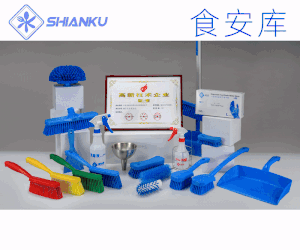食品伙伴網(wǎng)訊 2021年1月6日,歐盟食品安全局就一種食品酶纖維素酶(cellulase)的安全性評(píng)價(jià)發(fā)布意見。
據(jù)了解,這種食品酶是由非轉(zhuǎn)基因繩狀青霉菌株DP‐Lzc35生產(chǎn)的,旨在用于蒸餾酒精的生產(chǎn),烘烤和釀造過程。
經(jīng)過評(píng)估,專家小組認(rèn)為,在預(yù)期的使用條件下,不能排除飲食暴露引起過敏和誘發(fā)反應(yīng)的風(fēng)險(xiǎn),但這種情況發(fā)生的可能性很低。根據(jù)提供的數(shù)據(jù),小組得出結(jié)論,該食品酶在預(yù)期的使用條件下不會(huì)引起安全隱患。部分原文報(bào)道如下:
The food enzyme cellulase (4‐(1,3;1,4)‐β‐d‐glucan 4‐glucanohydrolase; EC 3.2.1.4) is produced with the non‐genetically modified Penicillium funiculosum strain Lzc35 by Danisco US Inc. The cellulase is intended to be used in distilled alcohol production, baking and brewing processes. Since residual amounts of total organic solids (TOS) are removed by distillation, dietary exposure was only calculated for baking and brewing processes. based on the proposed maximum use levels, dietary exposure to the food enzyme–TOS was estimated to be up to 0.416 mg TOS/kg body weight (bw) per day. Genotoxicity tests did not raise a safety concern. The systemic toxicity was assessed by means of a repeated dose 90‐day oral toxicity study in rats. The Panel identified a no observed adverse effect level of 84 mg TOS/kg bw per day, the highest dose tested, which when compared with the estimated dietary exposure, resulted in a margin of exposure of at least 200. Similarity of the amino acid sequence of the food enzyme to those of known allergens was searched and no match was found. The Panel considered that, under the intended conditions of use, the risk of allergic sensitisation and elicitation reactions by dietary exposure cannot be excluded, but the likelihood is considered to be low. based on the data provided, the Panel concluded that this food enzyme does not give rise to safety concerns under the intended conditions of use.
本文由食品伙伴網(wǎng)食品資訊中心編輯,供網(wǎng)友參考,歡迎轉(zhuǎn)載,轉(zhuǎn)載請(qǐng)注明出處!有任何疑問,請(qǐng)聯(lián)系news@foodmate.net。
相關(guān)政策解讀











 地區(qū):
地區(qū):






 魯公網(wǎng)安備 37060202000128號(hào)
魯公網(wǎng)安備 37060202000128號(hào)



